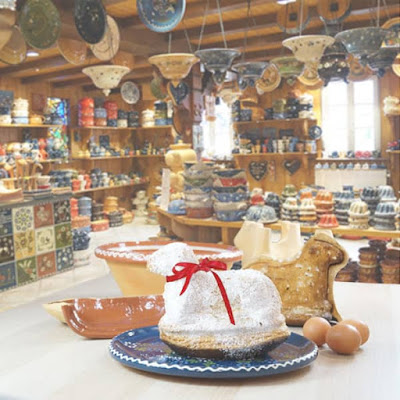French Easter Tradition - Le Lammele
On Friday I am going to be sharing one of my favourite French recipes with you - Le Lammele.
So today I am going to tell you a bit about the Lammele and why the French make these at Easter.
Lammele is a must on Easter Sunday in Alsace for breakfast, for a snack with a good coffee or hot chocolate or even for dessert with vanilla flavored custard or a scoop of vanilla ice cream.
Lammele is a lamb-shaped brioche, which is between 10 and 20 cm high. It is one of the traditional Alsatian cakes like Kougelhopf which have survived the centuries. You will find it in most Alsatian boulangeries and it is also made at home but only at Easter time.
You can find a Lammele mold in most Alsatian houses despite the fact it is only used once a year.
It is normally in the shape of a lamb but you can also find modern day versions in the shape of bunny rabbits.
 |
| photos from here |
Why is it in the shape of a lamb, you may ask?
The lamb is a symbol of gentleness, candor, innocence, kindness and even frankness. In Christian tradition, the Lammele has mainly symbolized Christ since the 16th century and had different meanings:
1. First of all it serves as a reminder of the sacrifice of the animal on Easter morning which is now we replaced by this delicious brioche style cake,
2. the Lammele could also be offered as a symbol of love to his fiancée,
3. it was also offered to children when returning from Easter Sunday mass.
During the Lenten period, it was forbidden to use eggs in cooking, a highly respected tradition. The recipe for this soft biscuit dough is very rich in eggs, and this made it possible to use up all the stock accumulated during this period. A custom that also exists in Poland, Germany and Austria.
The Lammele recipe is quite simple and I am sure you will love it as much as we do.
Almost all of the Lamele molds are still produced today in the potters' village of Soufflenheim.
Once unmolded, the Lammele is sprinkled with icing sugar, a small red ribbon is placed around the neck to represent the sacrifice of Christ and often also a small tissue paper flag in the colors of the Vatican yellow and white, or possibly red and white. white in the colors of Alsace.
Children love to enjoy it with a good hot chocolate, adults prefer to savor it with a good glass of white wine.
A demain mes belles ♥
Leeann x

Comments
Post a Comment